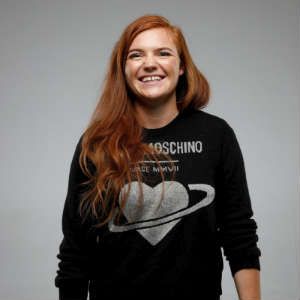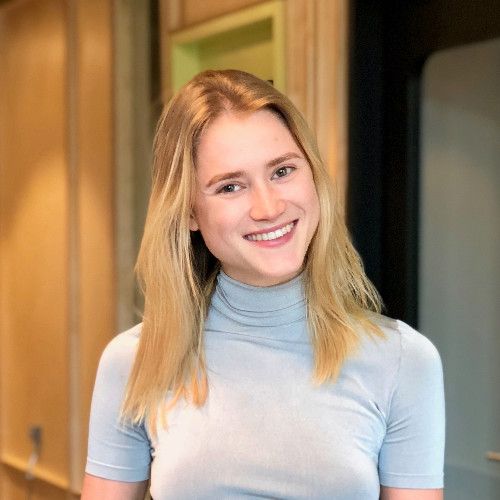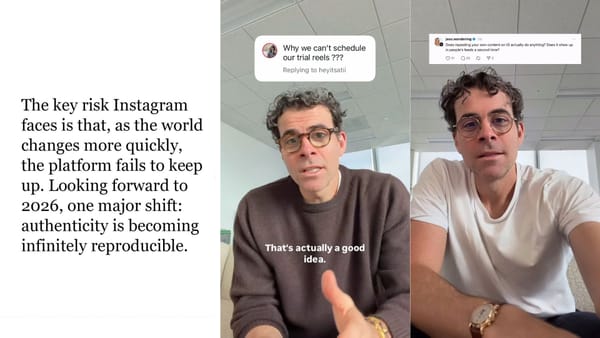
Scott Guthrie, influencer marketing consultant

Tom Augenthaler, digital and influencer marketing consultant, The Influence Marketer
The future is bright for influencer marketing but it will experience more growing pains as brands and influencers struggle with fake followers and more importantly fake engagement. Many brands will continue to make the mistake of choosing influencers based on large follower numbers rather than relevancy – but the good news that brands are starting to wise up. Also, we will hear more about “virtual influencers” in 2019 but it’s not yet clear whether brands will buy into it.

Emily Heathcote, influencer & partnerships marketing manager, TopCashback
The biggest trend that I think we’ll see in 2019 is more and more emphasis on Instagram Stories. We’ve already started to see a general switch of popularity from posts to Stories and the changes in the market show this a big trend. Recent updates include YouTube’s introduction of Stories for their creators, Instagram launching its close friends feature and Facebook rolling out its group stories globally; and that’s all within the past month. There are over 400 million people watching Instagram Stories a day and apps such as Unfold are getting more popular and providing a higher quality content. I think this is a positive thing; we’ll see more branded content and the swipe up functionality on Instagram allows for much better measurement of campaigns as you can introduce tracking links and really start to get a better view of the campaigns ROI.
Edward East, CEO, Billion Dollar Boy
sh influencers and extra budget flood in, influencer marketing will drive more reach into email, web and content marketing. Meanwhile, the content being produced will be increasingly used in other mediums such as out-of-home advertising and print.

Mona Hellenkemper, director of content, InfluencerDB
2018 marked the beginning of a movement against fraudulent influencers, fueled by Unilever’s CMCO Keith Weed, who called for action to clean up the influencer ecosystem and rebuild trust in the industry. It is true that brands need to take action by committing to collaborating exclusively with authentic, organically growing influencers and looking beyond reach when selecting collaboration partners. However, other parties within the industry need to do their part as well: agencies shall educate their clients on the topic of fraud strategies. The platforms themselves need to crack down on those third-party services that sell fake followers and inauthentic engagement – Instagram actually started to kill off these apps and we expect to see a lot more action like this in 2019.Finally, software providers will play a major role in bringing transparency to the industry, first of all by providing scientific data and analytics that enable companies to check whether an influencer’s audience and engagement is organic, and also through educating brands on the latest strategies influencers use to scam their collaboration partners and help them differentiate between fraudulent, deceitful accounts and valuable partners that provide the right metrics to promote the brand.
Christopher Henley, sales manager, Influencer Marketing Awards & Influencer Marketing Show
 Aaron Brooks, co-founder, VampTransparency will dominate the influencer marketing conversation in 2019. Not only in relation to an influencer’s following and likes, which have come under increasing scrutiny in the past year but in terms of reporting data. We need creative strategies to be data-driven so we can ensure brand’s campaigns align with their business objectives and are reaching the intended audience. That way, brands can gain real insight on how to optimise future initiatives and achieve that all important ROI.
Aaron Brooks, co-founder, VampTransparency will dominate the influencer marketing conversation in 2019. Not only in relation to an influencer’s following and likes, which have come under increasing scrutiny in the past year but in terms of reporting data. We need creative strategies to be data-driven so we can ensure brand’s campaigns align with their business objectives and are reaching the intended audience. That way, brands can gain real insight on how to optimise future initiatives and achieve that all important ROI. 
Ricky Ray Butler, CEO, BEN
In 2019, we can expect to see AI completely change how brands value, conduct and measure influencer marketing campaigns. Leveraging AI, and specifically deep learning, brands are going to be able to understand more than just what worked in their campaigns but also why they worked.Where before marketers believed humans were naturally the best at interpreting common types of unstructured data like imagery, audio and video, in actuality, it requires a combination of human and computer intelligence to elicit the greatest insights from this data. While it’s possible for humans to vet influencers through engagement, it can be hard to achieve scale. Whereas AI solutions, in contrast, can match for a specific type of criteria based on a brand’s needs within minutes. AI is also able to identify patterns within unstructured data that it would be difficult for humans to catch.Taking a sophisticated analytical approach to better understand not only consumers’ needs and opinions but also the motivations behind the two, AI will be utilised to scan through hundreds of thousands of influencers’ content in order to help brands find the influencer partners most likely to deliver results. This will allow brands to scale their influencer campaigns much more quickly while achieving higher and higher ROI.
Alice Pavin, influencer community manager, Tailify
Did you know that people retain 90% of a message when that message is consumed via video versus just 10% when the message is read? The majority of people prefer to consume video content. At the same time, 74% of consumers use social media to make purchase decisions.If we then combine the effectiveness of video with the power of influencers we will reach the most powerful media combination today. Social platforms have already realised that and have been putting video first across their apps. Facebook founder Mark Zuckerberg is a great example of this, with the launches of Instagram and Facebook Live, Instagram and Facebook Stories and most recently, IGTV. But that’s only the start; 2019 will be the year when influencer content will evolve from being static to being vivid, graphic content.

Dave Dickman, CEO, Tagger
Brands will start to value consumption metrics above all else and require visibility into this information beforehiring someone. Why wait until after you sign an influencer to get access to their first-party data? That will become a contingent component of the contract, so you know what you are getting ahead of time. Holding influencers to a higher standard of transparency will benefit the ones that are approaching this business the right way, as the influencers who have strong first party metrics will be the ones who never purchase followers. You can’t fake metrics like impressions or reach, you can only obtain them if an audience is truly captivated by your content/likeness.The influencer and paid media strategy will become a given for all influencer activation.This is a trend in the industry that continues to swell. Soon it will be a given that brands will extend every influencer post’s reach with paid media, and laser target it to more people in the demos or geos that matter most to them. Brand’s will realise that maximising an influencer partnership requires obtaining the usage rights to distribute all posts via paid media, as well as always accounting for the necessary media dollars upfront boost all posts. Influencer strategists will need to also become media planners to stay ahead of the curve.
Owain Williams, founder, Make it Mana
Firstly, influencers will continue to become more commercially savvy. This will lead to more advanced partnerships and also to the growth of influencer-owned brands being set up in competition to established brands – this is both an opportunity and a threat to businesses. Secondly, brands, agencies, and influencers will have to catch up with advertising guidelines as penalties begin to take force. Finally, consumers will continue to grow skeptical of influencer endorsements. Influencers, brands, and agencies will have to innovate ways to maintain authority.Ultimately, though, influencer marketing is a fast-paced and unpredictable space. The best way to prepare for 2019 is to remain agile and reactive. Brands should employ or outsource influencer specialists to stay on top of the game.
Ian Samuel, chief commercial officer, Buzzoole
Brands are becoming more strategic in their focus when it comes to influencer marketing. They are no longer content with just having generic data or ‘vanity metrics’ on a campaign, they are delving deeper and want to know exactly which influencers and which types of content are influencing sales and translating into purchases. With this in mind, we can expect 2019 to be the year when the channel of influencer marketing is held to far closer scrutiny than it has been previously with marketers looking beyond social metrics. It will be more important for influencers and agencies to develop robust measurement capabilities that effectively capture first-party data, in order to compare it with advertising campaigns using other media and prove that an investment into influencer marketing is worthwhile. The technology that will be developed in coming years will bring brands even more visibility about the success of their campaigns, meaning that platforms and providers that fail to provide the necessary data will fall behind as the market evolves.
David Wing, account manager, OST Marketing
In 2019, I see influencer marketing and employee advocacy being an automatic affiliation from the start. Company programs will approach their campaigns with a view to educating and sharing from within-outward and making this company advocacy from day one.







